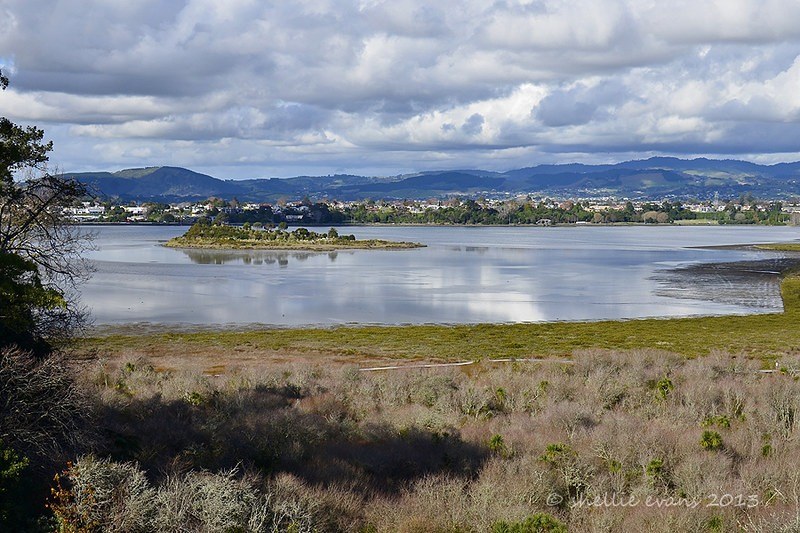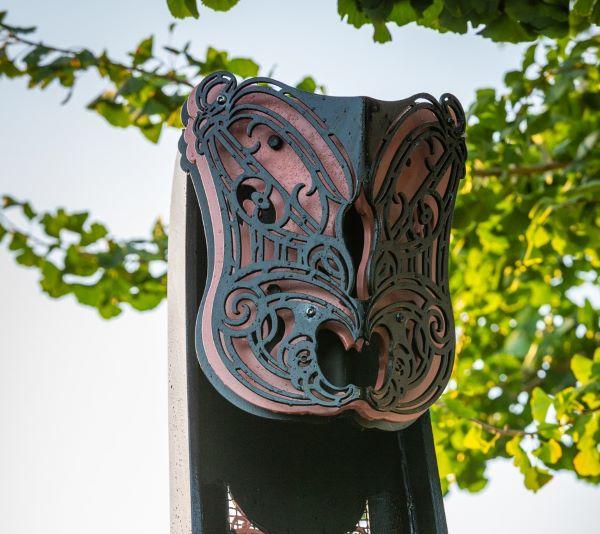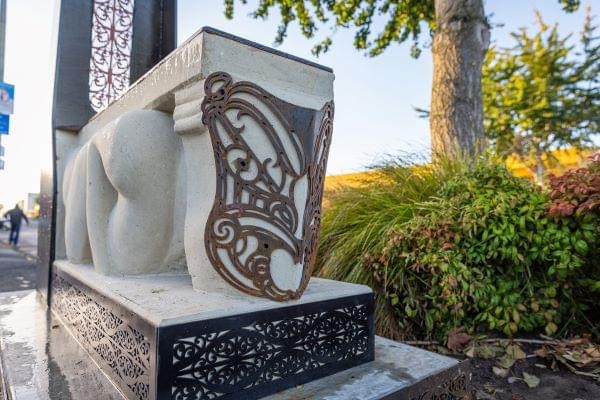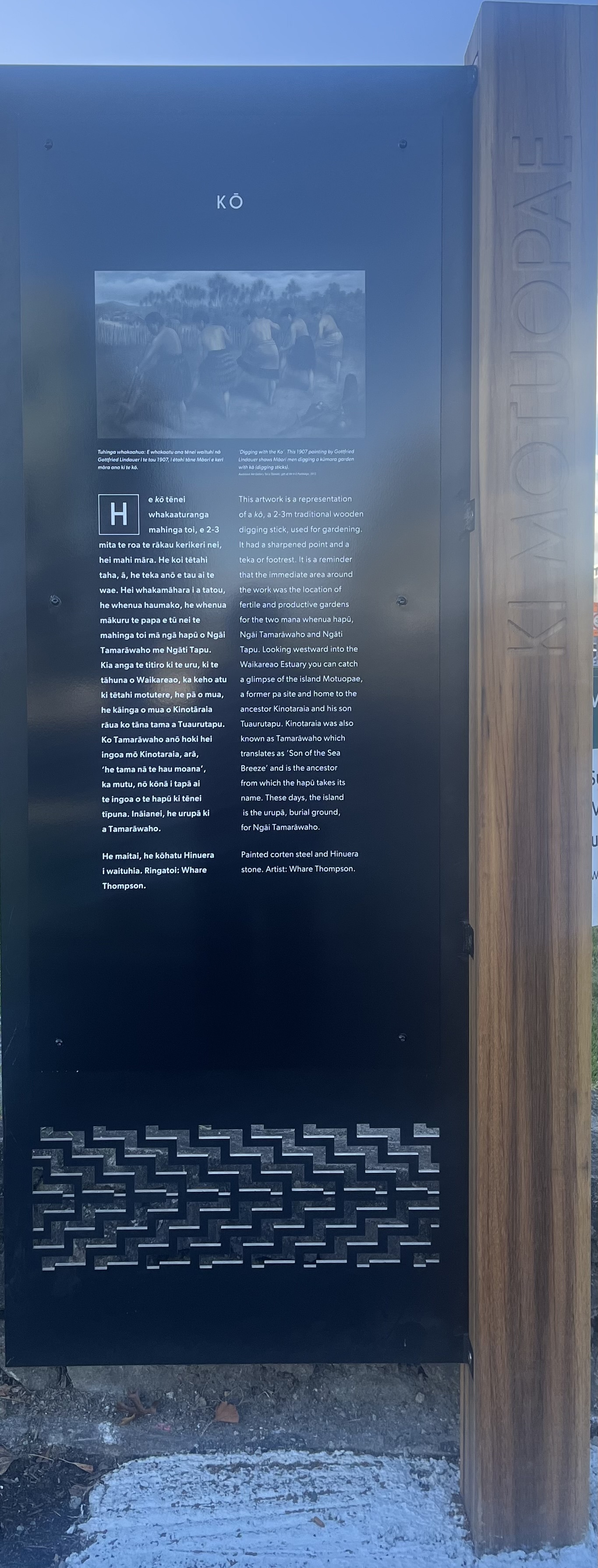In 1886, Motuopae Island in Waikareao Estuary was gazetted as a native reserve for the use of Ngāi Tamarāwaho. Since 1912 it has been used as the hapū urupā, a sacred burial ground.
Motuopae Island
Waikareao estuary is of great significance to Ngāi Tamarāwaho of Huria Marae in Judea Tauranga.
 |  | |
Just off Huria Marae is Motuopae Island, once the home of ancestor Kinotaraia and his descendant Tuarutapu. It is an urupā (burial ground) and was once referred to as Peach Island by Pākehā due to all the peach trees growing wild there. The urupā is still in use by the hapū to this day.
Ko – the Sculpture at 1st Avenue facing Motuopae Island ( often known as ‘Peach Island’)
Looking westward Whare Thompson’s scultpure is placed on the corner of 1st Avenue and Cameron Road (St Mary’s cnr.) facing the Waikareao Estuary so that it faces Motuopae Island, a former pā site and home to the ancestor Kinotaraia and his son Tuaurutapu.
The Interpretation panel tells the storty of Kinotaraia was also known as Tamarāwaho which translates as ‘son of the sea breeze’ and is the ancestor from which the hapū takes its name. These days, the island is the urupa, burial ground, for Ngāi Tamarāwaho.
 |  | |
 |  |
Tākitimu Drive, 3110
About the Ngai Tamarawaho rohe
Mai Mangorewa ki Waahinerua The hapu rohe within which Ngai Tamarawaho holds mana whenua begins from the Te Okohanga valley, moving outward along Kaitere, Westridge, connecting along Moffats Road, in a continuous line through to Tauriko; on the east, beginning at Otamataha (in common with Ngati Tapu) on a continuous line through from Sulphur Point, inwards to encompass downtown Tauranga and outwards to take in Otumoetai and the Matua peninsula; onwards including the Te Papa peninsula through to Gate Pa and on to Te Ranga and Taumata up to and including Puwhenua maunga. The boundary adjoining Ruahine or Waimapu is on this (western) side of the Waiorahi River. (See map attached as Appendix 1) Ngai Tamarawaho also claims Karewa motu as the home of their ancestral taniwha, Taurikura, while the seaward customary boundary extends to Tuhua and beyond
Ngai Tamarawaho is a hapu of Takitimu and Ngati Ranginui origin. The line of descent is from Tamateapokaiwhenua or Tamatea Arikinui who landed from the Takitimu ancestral waka at Te Awanui (Tauranga harbour), to Ranginui and then to his grandson Te Kaponga whose pa was at Tutarawananga at the mouth of the Waimapu River across the river from Poike. The line then comes down to Tahuriwakanui whose pa Ranginui a Tamatea was at Poike; and then to his grandson Rauhea Koikoi. Their son was Kinotaraia or Tamarawaho whose pa was at Otamataha. Next in the descent line is Tuaurutapu whose pa was on Motuopae and his son Pareaoana whose pa was at Orangipani or Huria. Kinomoerua, the brother of Kinotaraia, had his pa at Otumoetai. It is through these ancestors from the Kinonui line that Ngai Tamarawaho claim mana whenua
Source: Tauranga City Council
About the Sculptures for Cameron Road – read more about the Cameron Road Sculptures here